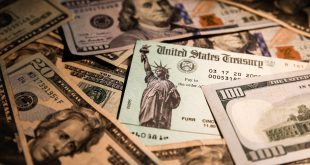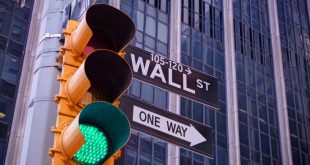US futures waver as investors consider latest signals on interest rates. Meanwhile, global markets were mixed Monday amid volatility, with US futures struggling for direction in holiday trading ahead of another busy week in terms of economic data.
Futures tied to the S&P 500 edged down 0.1%, as did those tied to the Dow Jones Industrial Average. Contracts tied to the tech-focused Nasdaq-100 added 0.1%. US stock and government-bond markets are closed Monday to mark Presidents Day.
Global shares inched up on Monday ahead of ahead of minutes of the latest FOMC meeting and data on core inflation that could add to the risk of interest rates heading higher for longer. The US dollar, which is heading for its largest one-month rise since September in February, was roughly flat on the day, giving some lift to commodity-linked currencies, thanks to a rise in the price of raw materials such as crude oil and copper.
Geopolitical tensions were ever present, with North Korea firing more missiles and talk of Russia ramping up attacks in Ukraine before Friday’s one-year anniversary of the invasion.
There were reports the White House planned new sanctions on Russia, while Secretary of State Antony Blinken on Saturday warned Beijing of consequences should it provide material support, including weapons, to Moscow.
But, with US markets shut on the Presidents’ Day holiday, non-US assets got some respite from last week’s relentless pressure. The MSCI All-World index rose 0.1%, helped by modest gains in Europe, where the STOXX 600 also rose 0.1%, skirting Friday’s one-week lows.
A roaring run higher in both stock and bond prices in the first six weeks of the year has come to a screeching halt, after a flurry of US data suggested the world’s largest economy is holding up far better than expected, which means interest rates will have to rise further and will take far longer to decline. Historically speaking, stocks do not typically bottom before the Fed is advanced with cutting, and markets never saw a low before the Fed has even stopped hiking according to JPMorgan head of global and European equity strategy Mislav Matejka.
Having dismissed warnings from US policymakers that inflation is far too high and far too persistent for comfort, investors are now coming to terms with the fact that they may have been overly optimistic in their assumptions.
Money markets show investors now expect U.S. rates to peak at around 5.3% by July, with a quarter-point rate cut possibly materializing by December. This marks a massive shift from expectations at the start of February for a peak below 5% by July and the first rate cut coming in just weeks later.
 Noor Trends News, Technical Analysis, Educational Tools and Recommendations
Noor Trends News, Technical Analysis, Educational Tools and Recommendations





